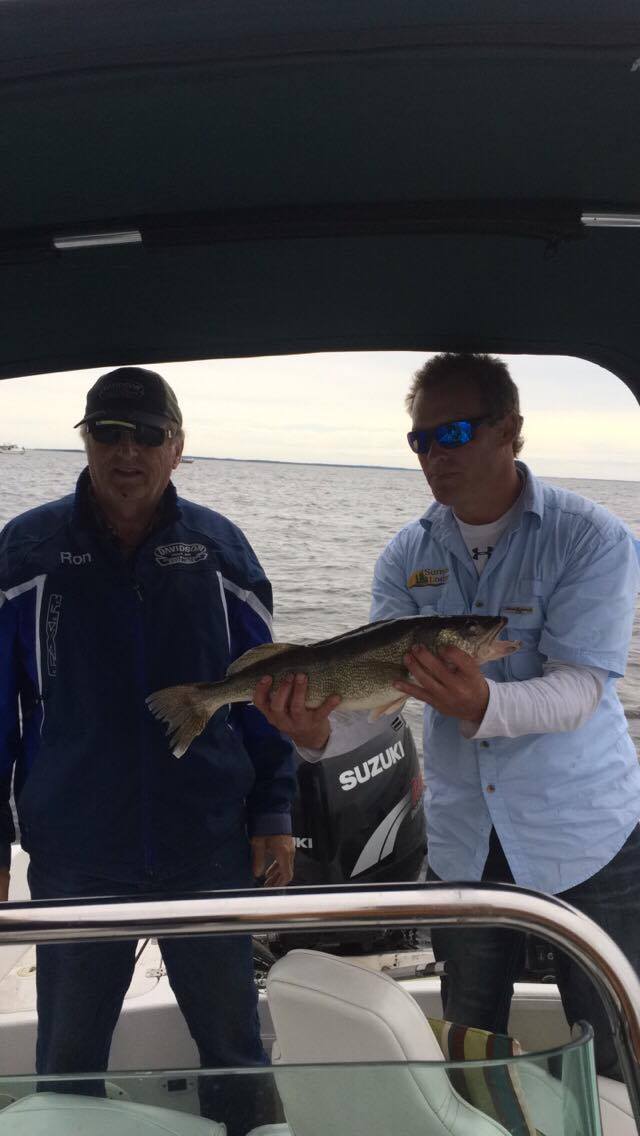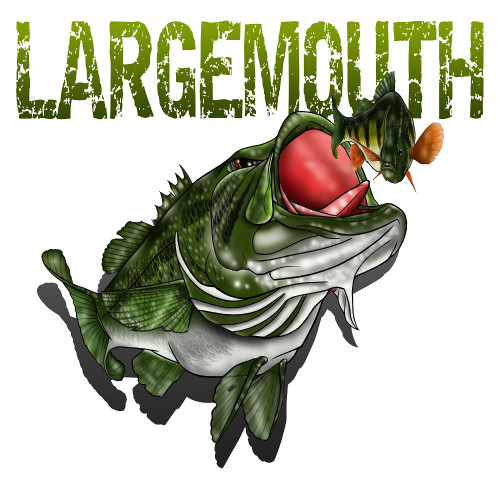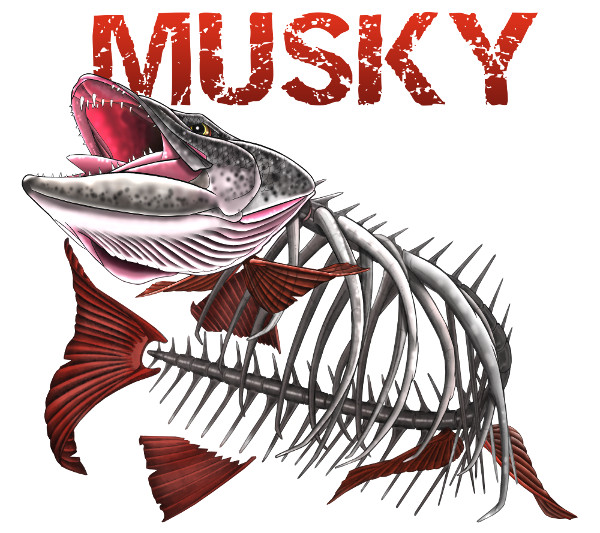Search the Community
Showing results for tags 'muskie'.
-

6.20.16 Sunset Lodge Fishing Report, nw Angle of lotw
Sunset Lodge posted a topic in Lake of the Woods Fishing Reports - Hunting - Events
6.20.16 Sunset Lodge Fishing Report What a week we had up at the Angle! The weather has gone from one extreme to the next. A few days of sunshine mixed with days of rain, and some heavy rainfall at that! Aside from the up and down weather conditions, we are still catching fish. Lots of limits being taken and a few larger fish being caught as well. Early in the week the fishing was slower due to a mayfly hatch, but has steadily improved over the last few days. On the Minnesota side, gold spinners with bottom bouncers and crawlers have been turning fish near Four Blocks, Little Oak, and Crowduck Islands. Work the flats around these areas, as well as the reefs and rock piles in 18 to 26 feet for the best action. Crankbaits have been producing fish in these areas as well. The Flats have been giving up a lot of fish this week as well. Depths from 6 to 10 feet have been best. Orange, gold and pink have been solid colors. On the Ontario side of the lake working the shorelines, points, and shallow reefs have been producing walleyes. Limits of "eater" fish as well as some over the 24" mark have been common. Jigging in depths of 20 to 25 feet with minnows and crawlers have been working best. Areas worth checking out are Deepwater Bay, Tug Channel, Monkey Rocks Reef, and the West side of Falcon Island. Smallmouth bass action has been lights out as well, casting small bucktails and crankbaits along rocky shorelines has been the ticket here. Muskie season started this week as well, and we've had several guests in camp trying their luck in landing one of these toothy critters! Casting baits in shallow bays, as well as rocky points have produced a few fish. Reports of fish ranging in size from 30" all the way to 45" have been slowly coming in. Cale Albers --------------------------- This past week can be summed up as the week of storms and the mayfly hatch. It made fishing a little tougher but we still caught plenty of fish. The water temp is holding steady at that 64-66 degrees depending on where you are on the lake. On the Minnesota side, pulling spinners in the mud was the way to go. 12-16 feet seemed to be the best depth. The Flats bite was strong at the beginning of the week but has slowed down a little bit now. Crowducks in 11-13 feet and Little Oak on the sandbar would be a good choice this upcoming week. Hammered gold was once again the best color. On the Ontario side, we fished all mud this past week. Fish are scattered throughout the mud and pulling spinners seemed to be the best method in 24-28 feet. Jigging anywhere there was current also seemed to be effective. Gold and chartreuse were the best colors this week. Smallmouth are still up in the shallows and you can catch quite a few of them in a day throwing shallow crankbaits, spinnerbaits or tube baits. Musky season is now open and there are a few being caught already. Fishing bays is the best choice but there are a few fish on the post spawn rock spots. Forrest Huset Sunset Lodge-
- oak island
- muskie
-
(and 5 more)
Tagged with:
-
 Selling 12x12 Muskie, Walleye, Bass decals. $14.99. Perfect for the boat or truck. The decals are printed on 6mm vinyl, UV protected and the art work is original. Message me if interested. Thanks.
Selling 12x12 Muskie, Walleye, Bass decals. $14.99. Perfect for the boat or truck. The decals are printed on 6mm vinyl, UV protected and the art work is original. Message me if interested. Thanks. -

MN DNR studies muskie to improve fishing for anglers
Rick posted a topic in Outdoor Minnesota Talk - Keep it Civil
Researchers carefully hoist a huge muskellunge onto a boat. They record its measurements, identify the sex of the fish, scan an electronic tag implanted in the muskie and return it to the lake where, one day, it could take an angler’s lure and provide a long-remembered thrill. Collecting information and studying muskie populations allows the Minnesota Department of Natural Resources to make well-informed decisions about how to stock muskie and manage harvest. “As anglers head into the muskie season that began June 6, they are enjoying opportunities that came about largely due to research-based management,” said Don Pereira, fisheries section chief. “Better information can lead to better fishing in a state that’s already a renowned muskie fishing destination.” The DNR studies muskie in a variety of ways, including looking into everything from muskie ancestry using DNA analysis to how well muskie grow and survive once they’re stocked in certain southern Minnesota lakes. The research builds on past work that identified how to best capture and rear a large-growing native strain of muskie, stock this strain into appropriate waters, and manage the harvest. “This large-growing strain is one reason muskie anglers are able to catch fish in the 50-plus inch trophy range,” Pereira said. “There are enough of these fish in the population that many anglers asked for the change to a 54-inch minimum length on muskie in most waters of the state, which is in effect this year.” Along with a growing interest in muskie fishing, research taking place around the state aims to fine-tune muskie management. Walker area fisheries: Using DNA to study muskie ancestry With the help of DNA analysis, researchers can trace the ancestry of individual fish, including muskie. The work has real-world management implications. “It’s a pretty cool concept. We’re starting to do more of it now on special projects around the state,” said Doug Schultz, Walker area fisheries supervisor. For one study, Walker area fisheries teamed up with Loren Miller, a fisheries research geneticist, as well as anglers who were shown how to collect muskie scale samples for DNA analysis. The study’s central question: In Baby and Man lakes in the Walker area, stocking of the less desirable Shoepack Lake strain of muskie ended in the 1970s. Now, what is the residual effect of Shoepack strain muskie on the current muskie population in these two lakes? “Strain” in fish is similar to heritage in humans: Fish from a geographic location of origin tend to have similar physical characteristics that may differ from those of other locations. From the 1950s to the early 1980s, muskie from Shoepack Lake were reared and stocked in several Minnesota lakes, even in lakes where a native muskie population already existed. It was later seen that the Shoepack strain grew slower and reached smaller maximum sizes than the Mississippi strain, which are native populations connected to the upper Mississippi River drainage system, including Leech Lake. The use of the Shoepack strain ended in favor of the faster growing and larger Leech Lake-Mississippi strain. On Baby and Man lakes, the study found that Shoepack ancestry declined to only nine percent, down from 13 percent in 1995. Yet, historical Shoepack strain stockings are still having an impact on size potential of some fish in today’s muskie populations. “This study could set the stage for future muskie management decisions on lakes with residual Shoepack ancestry,” Schultz said. “A study using DNA adds a new level of certainty about the effects of past stocking. That helps as we take multiple factors into account when making management decisions aimed at improving opportunities for anglers.” Montrose area fisheries: Tagging and recapturing muskie after new stocking Muskies were first stocked in 2011 in the Sauk River Chain of Lakes, giving anglers in the St. Cloud area a chance to fish for muskies close to home. For Montrose area fisheries staff, the stocking offers a rare chance to track the growth of a new fish population using electronic tags. “It’s a new fish to the system. We don’t really know what the growth potential is out there. It will be neat to find out,” said Joe Stewig, Montrose area fisheries supervisor. “Some of these fish will be marked, and we will then be able to track their growth throughout their lives.” Beginning in 2013, Montrose area staff started implanting electronic tags into muskies, work paid for through hunting and fishing license dollars and with financial help from the Hugh C. Becker Foundation through the St. Cloud chapter of Muskies Inc. After fish are tagged, the goal is to recapture some of these fish during fall electrofishing, when crews look specifically for these stocked muskies. “With continued funding, we’ll be able to use these tags to monitor the growth of this newly established muskie population,” Stewig said. “Using this method goes above and beyond the standard lake survey.” West metro fisheries: Tagging muskie to evaluate stocking efforts To study the effectiveness of muskie stocking in three Twin Cities metro area lakes, the DNR’s west metro fisheries staff is working on a muskie tagging project in partnership with the Muskies, Inc. Twin Cities Chapter and Hugh C. Becker Foundation. The study taking place on Lake Minnetonka, Bald Eagle Lake and White Bear Lake measures the survival numbers of year-old muskie, called yearlings, and smaller muskie less than a year old, called fingerlings. “All three lakes have high northern pike populations. So we normally don’t stock muskie in the face of that kind of competition,” said Daryl Ellison, west metro area fisheries manager. “But there’s an interest in it because they’re metro lakes.” The study results will help evaluate the DNR’s standard stocking ratio of one yearling per three fingerlings – important knowledge because yearlings cost more to stock than fingerlings. “Initial results seem to support the 3:1 ratio, but more study is needed,” Ellison said. “The study was showing some positive results for fingerlings in Lake Minnetonka.” Windom area fisheries: Studying Fox Lake muskellunge Fox Lake is Minnesota’s southernmost muskie lake, and was first stocked with muskie in 1999. Years later, electronic tags began informing an ongoing study on muskie in that lake. Each spring from 2011 to 2013, Windom fisheries staff counted, measured and weighed muskie captured with nets. They also implanted muskie with electronic tags, and recorded information about the growth of individual fish already implanted with a tag from a previous spring. Starting in 2012, muskie fingerlings have received electronic tags before they are stocked into the lake. To date, more than 1,200 muskellunge of varying sizes have been tagged in Fox Lake. “Through this study on Fox Lake, we’ll gain pertinent information on population abundance, growth and longevity of muskie,” said Nate Hodgins, Windom area fisheries assistant supervisor. “It will give us a good picture of muskie populations in similar size and type lakes.” Windom fisheries plans to use the data to help evaluate how Fox and perhaps other lakes are stocked in smaller, southern Minnesota lakes in the future. They will be netting muskie and updating Fox Lake population numbers every two years starting in 2015.





.jpg.328331f44d2ae3342eaa653dc321ddcf.jpg)



